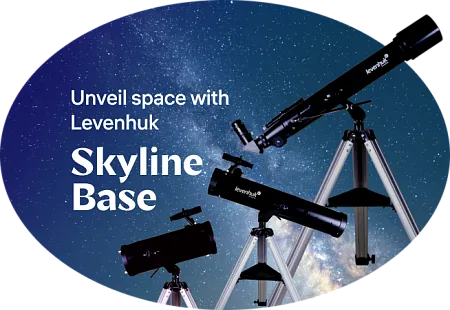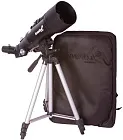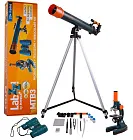Simple telescopes with an Alt-AZ mount for attractive prices
A telescope mount is one of the most significant parts of a telescope; it supports all its construction and helps to point a telescope to the desired object on the celestial sphere. Any mount consists of a base, axes of rotation (arranged vertically to each other), drives and systems for measuring rotation angles.
The Alt-AZ telescope mount is a simple mount that has an altitude axis and an azimuth axis, allowing the telescope to be moved up and down or from left to right respectively. The Alt-azimuth mount is much more compact, lighter and easier to use than the equatorial mount, and, furthermore, it’s much cheaper compared to other types of telescope mounts. The Azimuth telescope is an ideal choice for amateur astronomical observations, as well as for observations of the surface. Telescopes for children are usually set on alt-azimuth mounts, as they are lightweight, and easy to assemble and use – exactly what is needed for a kid.
Advantages of Alt-AZ mount:
- Simple and steady mount system without the requirement for balance weights on the axes or significant masses away from the centre of gravity, causing vibrations and increasing the tripod load. In a typical case, one bearing along the horizontal line and two – along the vertical line, would suffice.
- Simple and user-friendly for beginners.
- More portable compared to most equatorial ones, especially with apertures over 200 mm, and is often faster to prepare for observations.
- Easy to build yourself.
- More affordable price, especially with large apertures.

 BG
BG  BY
BY  CY
CY  CZ
CZ  DE
DE  EE
EE  ES
ES  EU
EU  GR
GR  HU
HU  IS
IS  IT
IT  LT
LT  LV
LV  MY
MY  PL
PL  PT
PT  RO
RO  SK
SK  TR
TR  UA
UA 



















